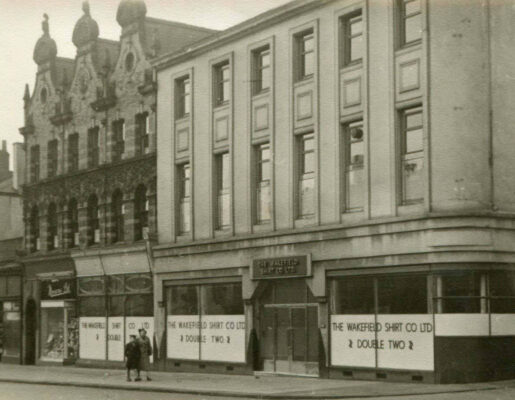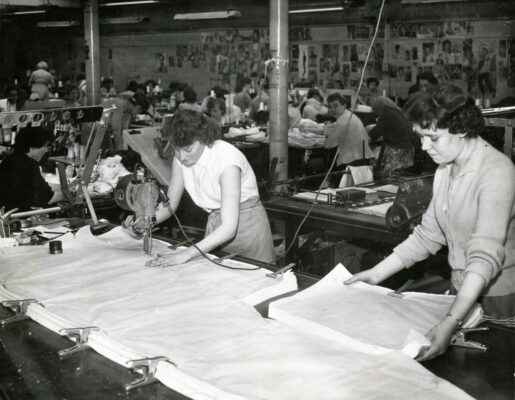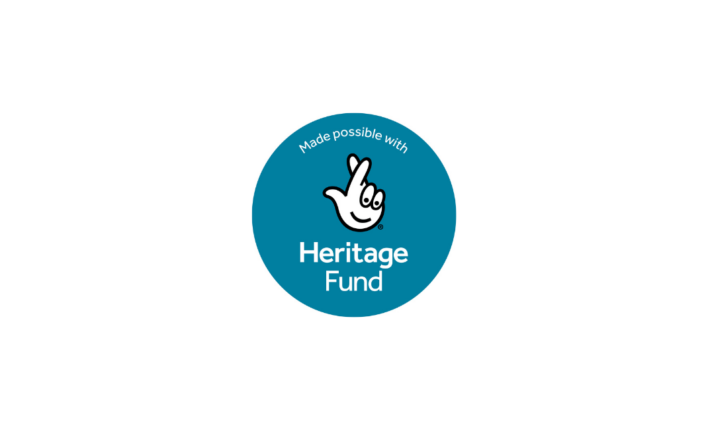
Free event

As part of Our Year – Wakefield District 2024, Our heritage, Our Stories connects us to our past, preserving traditions, stories, and cultural legacies that shape our identities. During June we are celebrating our textile heritage with a series of events and activities. Keep scrolling to read more about the Wakefield District’s strong textile heritage and the history of Double Two.
Wakefield is well known for its textile industries. It has proud heritage of wool selling, going back to medieval times. In the 1700s and 1800s, Wakefield had a strong textile manufacturing sector with companies dealing in raw wool, spinning yarn, weaving cloth and producing reclaimed wool known as ‘shoddy’. Many mills were built by the River Calder in Wakefield city centre and in Ossett. More recently, under the management of Jean Tyrrell, Ossett wool firm Sirdar’s on-trend knitting patterns regularly featured in the pages of Vogue magazine in the 1960s and 70s. The shoddy business is thriving again in Ossett. Fast fashion and more environmentally focussed textile waste management mean long term family businesses such as Edward Clay & Sons are not short of waste garments to recycle.
Emerging from the shadow of the Second World War, Double TWO Shirts began to literally change the fabric of men’s fashion. They created the world’s first shirt made entirely from synthetic fibres and they’ve gone from strength to strength ever since.
Double TWO is a family business, starting when Isaak Donner, a Austrian- Jewish entrepreneur escaping persecution as Nazi Germany engulfed mainland Europe, found himself with his family in Wakefield in 1940. Isaak’s son and current chairman of Double TWO, Richard Donner tells us his story…..
In 1940, in the midst of the Second World War, My father, Isaak Donner, and his partner, Frank Myers set up the Wakefield Shirt Company to produce quality men’s shirts from a small, fourth-floor, corner room of a building in Wakefield. With cotton supplies scarce throughout the war, they used viscose rayon, the only material available at the time, to make blouses for the women of Britain, who had replaced the men sent off to fight in the war.
By 1946, as cotton supplies normalized, the company pivoted back to men’s shirts. Recognizing the growing preference for looser-fitting collars, my father introduced a revolutionary concept – a patented shirt with detachable collars. Each shirt came supplied with a complimentary replacement collar and occasionally two sets of cuffs. This innovation not only enhanced the lifespan of our garments but also cemented our brand identity – Double TWO.
Partnering with Dr Rex Winfield in the early 1950s, a pioneer in synthetic fibres, the company developed the world’s first shirt made from Terylene, later known as polyester. We also expanded our production with the acquisition of a larger new facility, solidifying our position as a leader in the men’s shirt market.
In the late 1950s, we saw the birth of Frend, the world’s first commercial blend of natural and man-made fibres. Designed for a time when central heating remained a luxury, Frend offered superior strength and resistance to shrinkage and pilling, allowing us to create warm, long-lasting shirts for our customers.
In 1963, I had the privilege of joining the family business. Shortly after, we launched White Light – a cotton shirt with polyester reinforcements in the collars and cuffs for extended durability. This shirt, further enhanced with non-iron properties, quickly became popular. We also started advertising our shirts alongside the blockbuster films of the 1960s, with our iconic Double TWO James Bond adverts showing just before the opening credits.

Kirkgate factory

50's/60's production
In 1968 we acquired Wm Sugden & Sons Limited, a large clothing manufacturer from Barnsley, South Yorkshire, who since 1869 had been a key supplier of work wear. This took us into a whole new area of the clothing market. Over time, our successful polyester/cotton fabric was incorporated into the workwear range and proved an instant success with consumers.
As fashion trends evolved, Double TWO began to create shirts with bolder colours and patterns. We developed shirts entirely from polyester-cotton blends, offering exceptional wear and paving the way for a streamlined product line. With the rise of flamboyant styles in the 1970s, we launched “That Shirt by Double TWO,” a slim-fitting garment catering to the needs of the younger generation.
By the late 1980s, we employed over 1,500 people across six factories, exporting over 3 million shirts annually to more than 40 countries.
As the Internet began to play a far more prominent role in the retail industry, we launched the official websites for Double TWO and Sugdens, offering the opportunity for customers to browse and order our products from the comfort of their own homes.
In 2013, my son, John, and I had the honour of receiving the Queen’s Award for Enterprise – International Trade by Her Majesty Queen Elizabeth II at Buckingham Palace, the highest official UK award given to British businesses.
Moving forward, Double TWO is always looking towards the future and the constantly changing retail market. 2021 saw the launch of Double TWO Lifestyle – a collection of casualwear created for everyday life. Ranging from polo shirts to chino trousers, Double TWO has expanded to accommodate a full range of styles and occasions. We’re not just supplying shirts, but your whole wardrobe too!
Whether you’ve worn the shirts, worked at the factory or you saw the adverts on the TV, or on the railway bridges in and out of Wakefield city centre, Double TWO is woven into the story of the Wakefield. Wakefield Museum will be celebrating the textile heritage of the company in an exciting new exhibition called Seeing Double opening on Tuesday 28th May.
